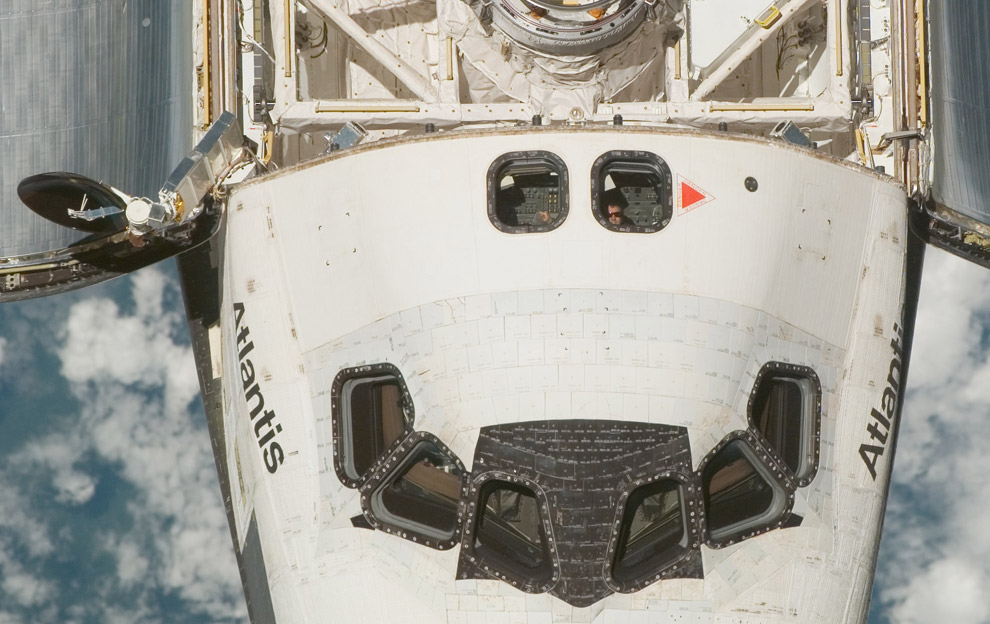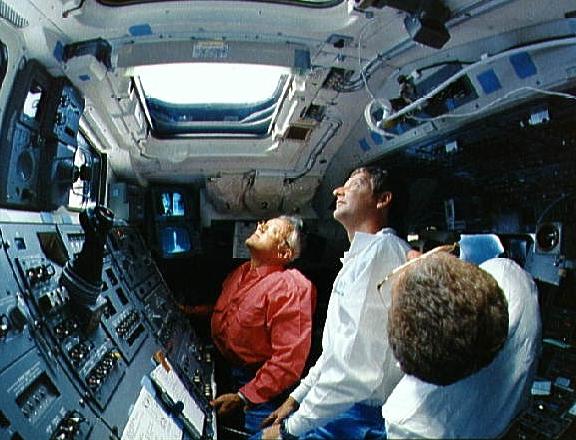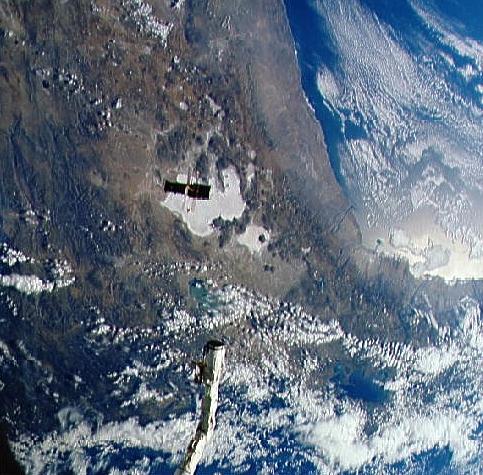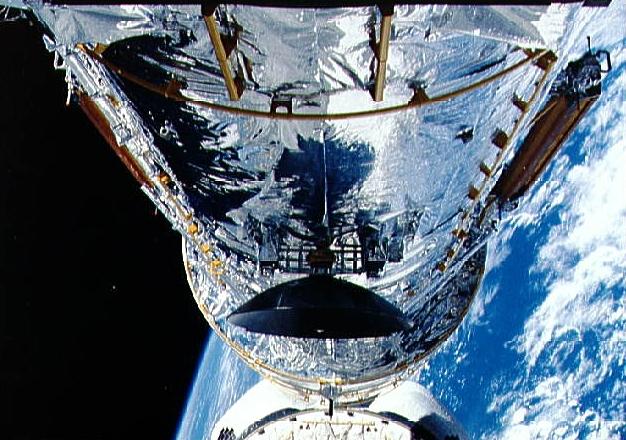BBC News
 Russia wants to keep its parts of the ISS flying beyond 2020
Russia 'to save its ISS modules'
Russia wants to keep its parts of the ISS flying beyond 2020
Russia 'to save its ISS modules'
By Anatoly Zak, BBC, 22.5.2009
Russia is making plans to detach and fly away its parts of the International Space Station when the time comes to de-orbit the rest of the outpost.
Industry officials told BBC News of plans to keep the Russian ISS modules flying around a decade from now. ISS partners are optimistic they will be
able to extend funding for the project beyond a current 2015 deadline. But most observers agree that most of the International Space Station will
have to be scrapped around 2020. According to the plans, the remaining Russian modules will form the core of a new orbital outpost, which would
serve as a haven and assembly shop for deep space missions heading to the Moon, Mars and beyond.
To facilitate the plan, RKK Energia, the country's main ISS contractor, has already started developing a special node module for the Russian segment,
which will double as the cornerstone of the future station. A ball-shaped compartment with docking ports on six sides would enable the future outpost
to stay in space indefinitely, with only individual components being replaced as needed. The current architecture of the International Space Station
makes replacement of some of its key modules practically impossible. Unlike many Nasa and European space officials, Russian engineers are confident
that even after two decades in orbit, their modules would be in good enough shape to form the basis of a new space station. "We flew on Mir for 15
years and accumulated colossal experience in extending the service life (of such a vehicle)," said a senior Russian official at RKK Energia, Russia's main
contractor on the ISS.
"I don't see any problems, with the exception of penetration of the module's skin by a meteoroid. (The vehicle) can fly twenty or thirty years and,
if we don't have a direct hit, we can replace practically every internal component. We learnt a lesson from Mir that anything that can fail in this period of
time can be replaced." However, the idea of turning the Russian segment of the ISS into an independent space station carries major political, legal and
financial pitfalls, Russian officials admitted. "I can tell you it is technically possible to separate the Russian segment (from the ISS) and fly free, however,
(in this case) there are a number of issues with the... end of the station's life," a Russian space official told BBC News.
 - The ATV could potentially guide the ISS to a controlled destruction
- The ATV could potentially guide the ISS to a controlled destruction
Since Russians want to fly the key service module away along with the rest of its segments, the remaining parts of the station would be left without
propulsion capability. These would be needed to maintain the station's orbit or to plunge it into the Earth's atmosphere over a safe area. According
to Russian sources, they have actively discussed their intentions with American partners. But have so far failed to come up with a satisfactory solution.
"Our position is that the primary integrator of the station (Nasa) is responsible for a civilized end to the flight after the conclusion of the mission," a
Russian official said. "They (the Americans) said they understood the issue, but did not go beyond that."
To resolve the problem, Russian space officials are eyeing the European-built ATV spacecraft, whose propulsion system is powerful enough to guide the
station towards a controlled destruction. But currently, the vehicle can only dock with the Russian segment, and would need significant modifications
to implement the new plan. Manuel Valls, head of policy and plans at the human spaceflight and exploration directorate of the European Space Agency
(Esa) told BBC News that the agency did conduct some preliminary studies of docking the ATV to the American segment of the station. However Esa was
primarily focused on reaching a swift agreement with its partners on funding for the station until at least 2020. "If and when the ISS will be de-orbited,
which is, again, highly unlikely to happen before 2020, then the right vehicle to do the job would be the ATV," Mr Valls said. "However, by 2020, we will
also have the HTV (a Japanese cargo vehicle designed to dock with the US segment) and probably American vehicles, which could be used as well. It is
more than 10 years from now, so anything can happen."
 - The new Russian ship would be launched towards the end of the next decade
- The new Russian ship would be launched towards the end of the next decade
Although the Russian federal space agency (Roscosmos) first announced plans to succeed the ISS with its own space station almost a decade ago,
several recent events brought this plan to the forefront of the country's long-term space strategy. In 2004, the US government made a decision to abandon
the ISS in the middle of the coming decade, and direct available Nasa funds toward lunar exploration goals. Currently, the US space agency plans to end
its participation in the ISS around 2015, exactly the time when the newest Russian modules of the station are scheduled to reach the launch pad. (
more)
___
See also: BBC News
•
Nasa plans shuttle's new landing
•
Russia mulls rocket power 'first'
•
Russia to unveil spaceship plans
•
Buran - the Soviet 'space shuttle'
•
Russia to approve new Moon rocket
RELATED INTERNET LINKS:
• RKK Energia:
http://www.energia.ru/english
• Roscosmos:
http://www.roscosmos.ru/index.asp?Lang=ENG
• International Space Station (Nasa):
http://www.nasa.gov/mission_pages/stati ... index.html

 • NASA Targets Saturday Landing
• NASA Targets Saturday Landing - Web: Photos
- Web: Photos




 •
• 




 - Live Coverage:
- Live Coverage: 
 •
•  -
-  -
-  •
• 



 Hubble flying 1. time in space
Hubble flying 1. time in space The Hubble release
The Hubble release Space Photos:
Space Photos: 





